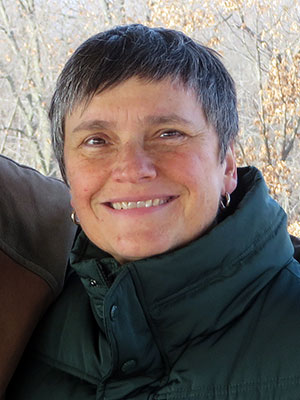Bettina Arnold
Web Site: people.uwm.edu/barnold/
online: Google Scholar
online: Academia.edu
online: National Geographic
Degree(s)
PhD, Anthropology, Harvard University
BA, Archaeology, Yale University
Courses Taught:
Anthro 101 - Human Origins (Sample Syllabus)
Anthro 305 - The Celtic World (Sample Syllabus)
Anthro 306 - European Archaeology (Sample Syllabus)
Anthro 307 - World Archaeology: Foundations of Civilization (Sample Syllabus)
Anthro 426 - Who Owns the Past? (Sample Syllabus)
Anthro 763 - Anthropology Professionalism (Sample Syllabus)
Anthro 802 - Perspectives on Prehistory (Sample Syllabus)
Anthro 942 - Seminar: Archaeology of Iron Age Europe (Sample Syllabus)
Anthro 942 - Seminar: Archaeology of Gender (Sample Syllabus)
Anthro/Honors 381 - The Archaeology of Armageddon (Sample Syllabus)
Anthro/Honors 381 – Fantastic Archaeology: Frauds, Myths and Mysteries (Sample Syllabus)
Research
Professor Arnold's area of expertise is the pre-Roman European Iron Age, but in the course of her career she has participated in archaeological projects ranging from the Middle Bronze Age through the early medieval period in western Europe. Since 1999 she has co-directed a research project in southwest-Germany focused on the burial record of the early Iron Age Heuneburg hillfort and its environs. Finds from those excavations were featured in Die Welt der Kelten: Zentren der Macht - Kostbarkeiten der Kunst, a major exhibition in Stuttgart in 2012-2013. Her work has been directed toward the following research topics: the archaeological interpretation and analysis of complex societies, particularly as reflected in mortuary contexts; material culture as a symbolic system and a means of communicating social relationships; the archaeological interpretation of prehistoric gender configurations in burial contexts; and the socio-political history of archaeology and museum collecting, especially their involvement in identity construction in 19th and 20th century nationalist and ethnic movements in Europe and the United States. She published a ground-breaking article on the use and abuse of archaeology for political purposes in Nazi Germany in Antiquity in 1990 that has been reprinted repeatedly. In addition to being the founding Editor of the on-line peer-reviewed journal e-Keltoi, she is a member of numerous editorial boards, including the History of Archaeology series for Oxford University Press and the History of Archaeology Commission of the UISPP.
Current PhD advisees are completing research projects based on the social impact of the introduction of iron in Ireland; the archaeology of identity in Iron Age Cornwall; human-animal relationships as represented in iconographic, textual and faunal material of the Iron Age in Slovenia; the role of landscape in shaping and reflecting social change at the late Iron Age/Roman transition in southern England; silver use in the Iberian Iron Age and its apparent avoidance in other areas of Europe; and the definition of deviance in the mortuary context of pre-Roman and Roman Iron Age mortuary contexts in southern Britain.
Masters student advisees frequently work with museum collections at the Milwaukee Public Museum or at other institutions (most recently the Smithsonian, Harvard's Peabody Museum and the Logan Museum). The titles of recent Masters theses can be found at the following URL: uwm.edu/anthropology/graduate/dissertations-theses/.
Other Relevant Activities
Co-editor, Cambridge University Press/European Association of Archaeologists Elements in European Archaeology series
Editorial Board Keltische Forschungen 2009-present
Editorial Board Archaeological Dialogues 2003-present
Editorial Board, American Anthropologist
Editor, Center for Celtic Studies on-line journal, e-Keltoi
